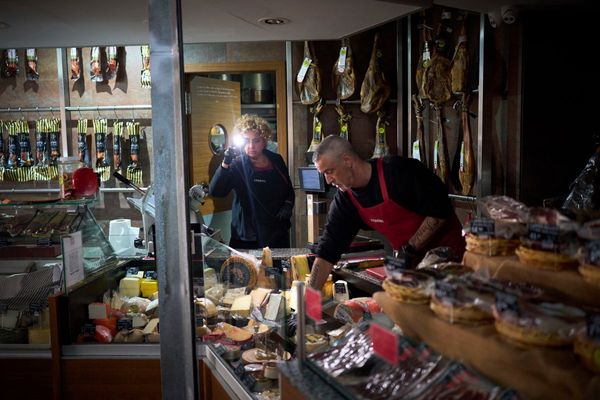
After two years of anticipation, at 3.02pm on Monday, Phoebe Philo made her return to the fashion industry with the online launch of her eponymous brand.
Just hours later, most of the 150 piece collection, including a shearling jacket for £12,000, was sold out. Each unavailable item shrouded in a hazy maroon colourway to signify its coveted status.
“Smiling at the clothes, but my wallet says no,” one Instagram user wrote.
“Phoebe Philo didn’t stop at Open your purse! She said ‘Sell your house, rob a bank, and do some credit card fraud too!’” wrote another user on X, the platform previously known as Twitter.
“Philo’s reputation precedes her,” says Aoife Byrne, a retail analyst at Edited. “She has safely been able to launch her products solely online, with no physical presence or touchpoint, thanks to her devoted fanbase.”
The launch comes six years after Philo stepped down as creative director of Céline, when the brand name had the acute accent still intact.
Philo, a social media renegade, completely disappeared. That is until 2021, when it was announced she was coming back, with her own name and vision and a minority backing from luxury conglomerate LVMH.
The furore has been palpable: the Phoebe Philo Instagram page amassed more than 300k followers without any posts. While other brands would have leaned heavily into the hype, churning out teaser videos on social media and a countdown timer, in the lead up to Monday’s launch there were few details on what it would actually entail.
Fans who had registered their interest on the brand’s site were told it would launch on 30 October, however, they weren’t given a time. This led to many pointlessly rising before dawn and refreshing the site.
Once it did finally go live, many experienced glitches and crashes, probably as a result of the amount of people clicking to see if classic items such as a black leather tote bag was really £6,200. It was.
All the prices are eye-wateringly expensive. The fact that many sold out within minutes including a £3,000 necklace that repeated the word “mum” points to Philo’s enduring appeal and the loyalty, not to mention patience of her acolytes, affectionately known as Philophiles.
“I initially was a bit underwhelmed,” says Yana McKillop, a stylist who owns over 50 items from Philo’s previous tenure at Celine. “That’s the problem with such a long wait, I had built it up in my head so the expectations were very high.”
McKillop says she missed out on a pair of trousers that can be unzipped all the way up from ankle to waistline but did manage to buy a grey dress and one of the small bags.
“I was initially unsure but within a few hours of looking at the pictures and the details of the clothing it grew on me. It’s a great return.”
Philo might be a woman designing for other women but as the launch clarifies it’s not a brand for all women.
Not only does the exorbitant pricing curb consumption to the wealthiest, the sizing is somewhat excluding too with most items spanning a UK 6 to UK 14. Unfortunately not rarefied behaviour in the luxury market: many items on Gucci’s website stop at a UK 12.
While some of the items have comparable price points to other luxury brands such as Bottega Veneta and The Row, the main difference is, you can actually visit a store and try on their pieces.
Phoebe Philo does accept returns but doesn’t do exchanges, meaning if you buy something that is too small, you have to send it back with no guarantee you can buy it in a different size.
This will further fuel the luxury resale market. In fact, many questioned whether some were just buying items to resell at an even higher price point.
But it is the high street that will feel the real Philo impact. Much of the collection harks back to Philo’s design DNA, which many retail companies already churn out copies of week after week.
No doubt someone has already been tasked with that job.







